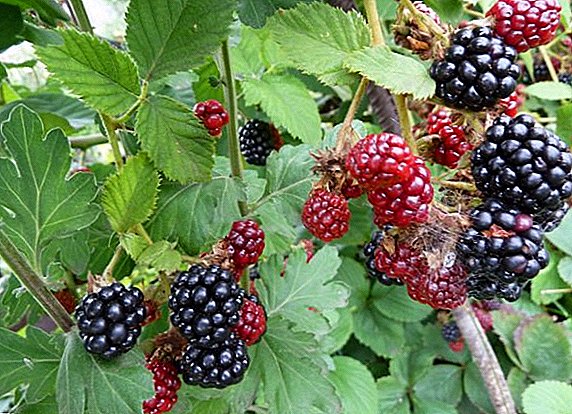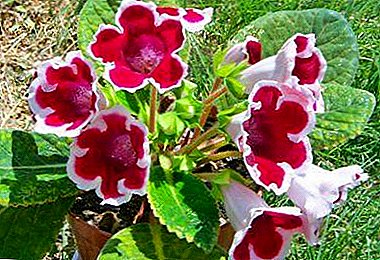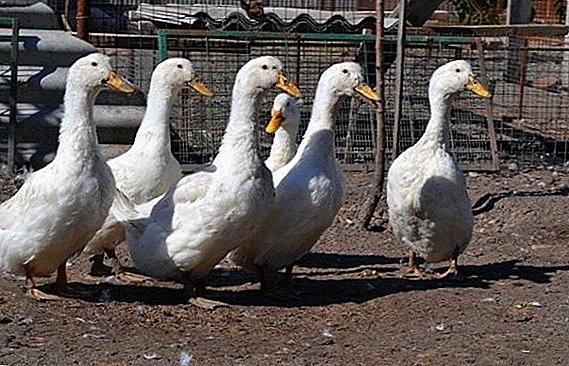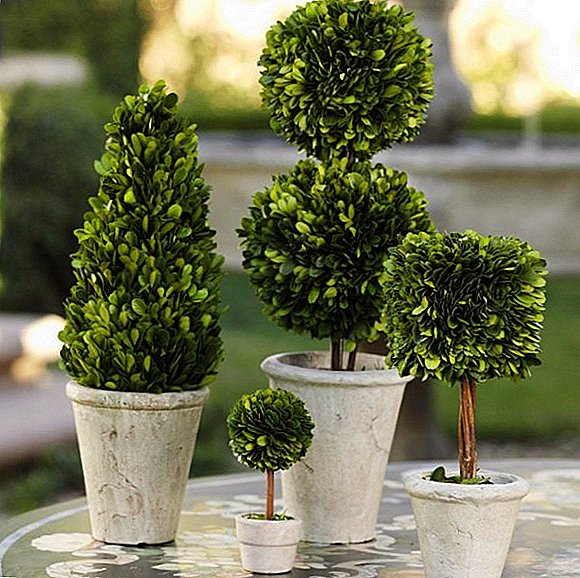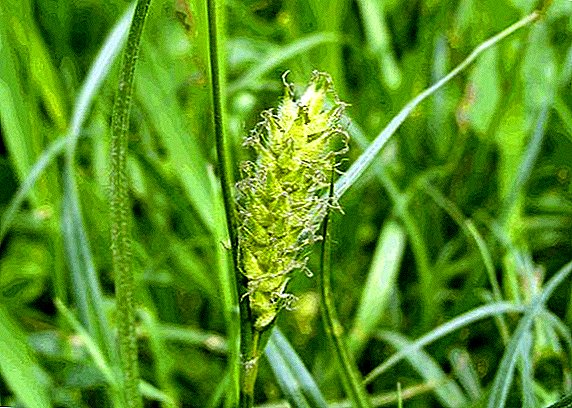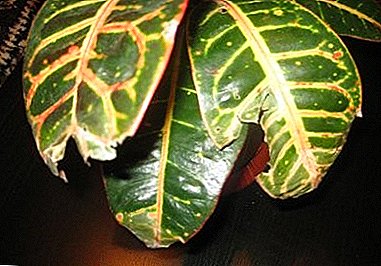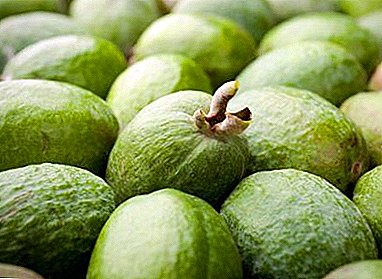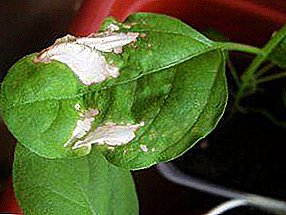
The fragile and tender seedlings of sweet pepper are very susceptible to diseases affecting its further development.
If the problem is not solved in a timely manner, it quickly dies, and some diseases spread very quickly and seize all the landings.
In addition to pepper can suffer tomatoes, eggplants and other plants. A big arsenal of remedies is offered to help the gardener, but the main thing is prevention and proper care.
Today we will talk about the disease of pepper and the fight against them with a photo. We describe the signs of diseases and methods of treatment. Let's tell why pepper seedlings die?
Causes of disease
Excessive watering, sudden changes in temperature, too large containers, improper picking, lack of fresh air, or an oversupply of fertilizers - all of these factors adversely affect young plants.
The causes of the disease can also be:
- infected seedsnot processed before sowing;
- using garden tools and containers in contact with diseased plants;
- soil with harmful microorganisms and insect larvae.
The best measure of prevention will be soaking the seeds in a dark pink solution of potassium permanganate or in 3% hydrogen peroxide. Boxes for seedlings and tools are thoroughly washed, boiled over and disinfected with potassium permanganate, lime chloride or other means.
 For landings you can not use the garden or greenhouse soil, which already grew peppers, tomatoes or eggplants.
For landings you can not use the garden or greenhouse soil, which already grew peppers, tomatoes or eggplants.
The best option - the soil from under the grass or greenery. Especially useful for peppers are parsley, beans, mustard.
The earthmust be calcined or shed with an aqueous solution of copper sulfate. All these measures will allow to destroy not only the spores of fungi, but also the larvae of insect pests.
An excellent measure of prevention - tillage and seedling phytosporin. Dry or pasty concentrate is diluted with water at room temperature, exact proportions are indicated on the package. You can handle both healthy and already sick seedlings. In combination with other measures, the drug gives a stable result in the fight against fungal and bacterial diseases.
Diseases of pepper seedlings and struggle with them, photo
The most common ailment is black leg in pepper seedlings, what to do? It is easy to recognize it: the basal part of the stem darkens, then begins to dry out and thin, blocking the access of nutrients and moisture to the upper part of the plant. In the advanced stage, seedlings begin to fall massively.
The causes of the blacktop:
- thickening landings;
- abundant watering at low temperature;
- too sour soil.
Helps fight the disease spraying plantings pink solution of potassium permanganate or treatment with copper preparations.
The daily temperature in the room should be raised to 22-24 degrees, at night it should not fall below 18 degrees.
If the seedling has reached the age of 15 days, it should be dived, choosing not too large pots.
The optimal volume is 100-150 ml. The ground for picking should be light, with a small amount of sand. Water the plants need warm water, no more than 1 time in 6 days. During the picking, all diseased seedlings are rejected.
Black leg at pepper seedlings photo:

More rare disease - black bacterial spotting. It affects young shoots and just unfolded leaves. First visible on the seedlings individual black specks, gradually their number increases. Launched ailment causes the death of plants.
Spotting occurs when the planting thickens, the use of contaminated soil or seeds. As a preventive measure, it is recommended to spill the soil with a languid-pink solution of potassium permanganate and occasional spraying of plantings with phytosporin. Affected plants are immediately removed and destroyed..

Fusarium wilt. A common disease that affects the seedlings at the earliest stage, after full unfolding of the cotyledon leaves. The leaves begin to wither, turn yellow upward, at a cut on a stalk the brown vascular ring is clearly visible. The fungal disease spreads through garden tools, boxes and pots, and even gloves.
Affected plants should be removed in a timely manner, the remaining plantings are abundantly sprayed with phytosporin or other anti-fungal drugs. Desirable pickling seedlings using light, decontaminated soil.

Appearance mold on soil and seedlings scares inexperienced gardeners. However, not all mold is dangerous. Light whitish down on the surface of the ground, it signals only a lack of sun and excessive humidity. It will help to place boxes with seedlings in bright sunlight or under a lamp, as well as attentive watering with warm water and frequent airing.
The soil for planting should be carefully loosened. You can grind it with a thin layer of peat, it will protect against mold and maintain normal moisture levels.

Much more dangerous fungus, which appeared on the leaves and stalks of seedlings. One of the common diseases is gray rotaffecting heavily thickened seedlings. Thick gray down appears at the base of the stems and abundantly covers the soil. If you do not fight with gray mold, the plants die quickly.
Helping them save spraying a dark pink solution of potassium permanganate, a weak solution of blue vitriol or antibacterial drugs.

Another dangerous disease is late blight. Typically, peppers become infected during flowering and ovary formation, but sometimes seedlings are affected. Young sprouts are covered with mold at the base of the stems, the leaves turn yellow and curl. Sick plants must be immediately removed and destroyed.

Experienced vegetable growers are confident that young peppers are the most vulnerable in the first 100 days. Gradually, the plants grow stronger, receive immunity against disease. Transplanting in a greenhouse or in the ground only need completely healthy specimens, without signs of fungus, wilt or other ailments.
Careful observance of the rules of hygiene, disinfection of soil and seeds, timely watering and suitable temperature conditions will help to grow strong and promising seedlings and reduce the risk of disease in adult plants. If, however, the seedlings are sick, then it should be immediately treated.
So, we discussed the cultivation of pepper seedlings at home, what diseases can be, cited the reasons why young plants are sick, what to do if white spots or rot appear?
Useful materials
Read other articles on pepper seedlings:
- Proper growing from seed.
- How to grow black pepper peas, chili, bitter or sweet at home?
- What are growth promoters and how to use them?
- The main reasons for pulling seedlings.


